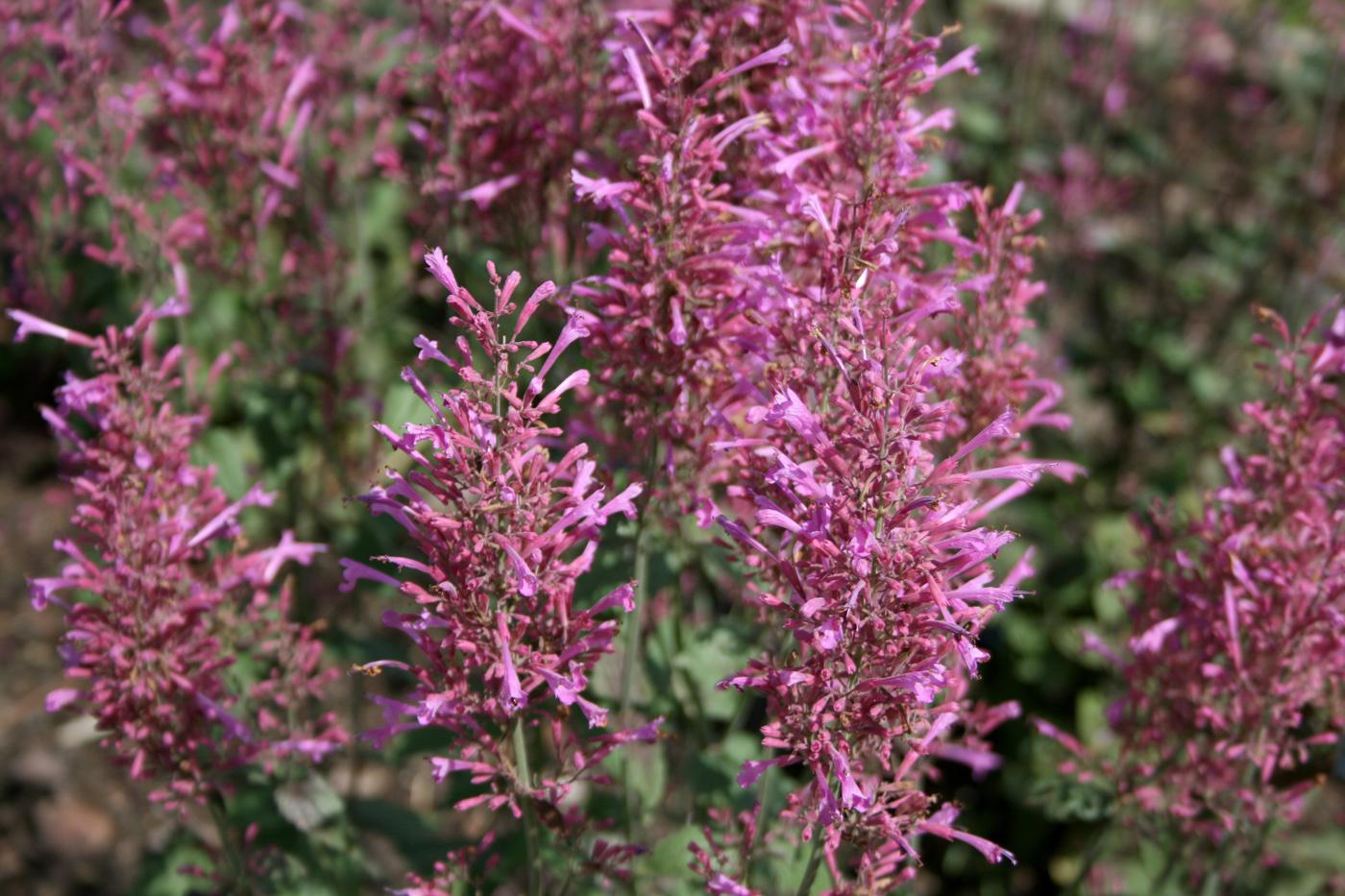Information Possibly Outdated
The information presented on this page was originally released on July 19, 2011. It may not be outdated, but please search our site for more current information. If you plan to quote or reference this information in a publication, please check with the Extension specialist or author before proceeding.
Agastache can provide garden color, fragrance
If I told you about a flowering plant that likes full sun, needs little water and thrives on neglect, wouldn’t you want to go out and buy one? Or several?
A plant with these requirements sounds perfect for our hot Mississippi gardens. Agastache (pronounced ag-ah-STAK-ee) may just be that plant. More commonly known as licorice mint, Mexican hyssop or hummingbird mint, this member of the mint family has -- as you may have already guessed -- a pleasing licorice aroma.
It thrives under a high heat load in the summer, in areas with western exposure or between strips of concrete around sidewalks and driveways. When agastache’s foliage is disturbed, it releases the heady fragrance of licorice mint.
A selection that is certainly landscape-worthy is Golden Jubilee, an All-America Selections winner in 2003. This plant has gorgeous, serrated, chartreuse leaves and a symmetrical branching habit. It is topped by dense flower spikes of deep lavender-blue from late spring through late summer and into the fall.
Another outstanding selection is Agastache Color Spires Pink, which has an upright growth habit and can get quite tall.
This plant is a good choice for combinations in the landscape or containers. Reaching up to 30 inches tall, Color Spires Pink makes a dramatic thriller plant. Try pairing it with May Night salvia. The dark purple flowers of May Night contrast nicely with the clear pink flowers of Color Spires Pink.
Hummingbirds will not be able to resist Agastache Summer Fiesta, which produces an abundance of sweet nectar. The dense, festive, orange-red flowers are held high on 28-inch spikes that are showy on even the hottest days of summer. An added feature is that the red base of the flower, called the calyx, will give the impression of continued flowering for several weeks after the petals fade.
Agastache tolerates poor, sandy and rocky soil as long as it drains. A tight soil that stays waterlogged will kill the plant. Do not over-fertilize, as excessive fertilizer causes leggy growth at the expense of flower production. All it needs is a couple of tablespoons of a good, slow-release fertilizer mixed in at planting.
Deadheading is not required, but you may want to trim back to keep the plant looking tidy.
Agastache is an annual or short-lived perennial, and unlike many of its mint cousins, it is noninvasive. It can achieve perennial status because it readily reseeds. This could become a problem, but it is easily remedied by simply removing any unwanted seedlings. Or you could just sit back and enjoy the agastache as it pops up in random places in your garden.








